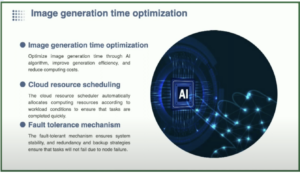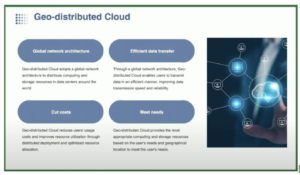Embracing Open Source for AI-Driven Smart Networking
In a presentation delivered during ONE Summit 2024, former LF Edge Board Chair,Tina Tsou, shared insights on leveraging open source AI technologies to enhance network performance and innovation. The following summary explores the pivotal role of open source solutions in driving smarter networking strategies, as highlighted by Tsou.
AI-Powered Translation with OpenAI Whisper Model
Tsou performed a live demonstration of a real-time translation application powered by OpenAI’s Whisper model. Whisper excels in automatic speech recognition (ASR) and supports 99 languages. Whisper showcased its ability to break down language barriers, facilitating seamless communication across diverse linguistic groups. This technology illustrates how open source AI can enhance global connectivity and poster-inclusive interactions by enabling instant translations.
Optimization of Image Generation
Tsou also highlighted the important role of image generation in modern networking, specifically citing Stable Diffusion (an open source model known for its efficiency in generating high-quality images) as an example. Additionally, she summarized experiments with Meta’s LLaMA models which aim to optimize the image generation process further. This is huge for applications requiring rapid and accurate image processing, like real-time visual analytics and augmented reality. Open source solutions, like Stable Diffusion, underscore the importance of community-driven innovation in advancing AI capabilities.

Edge and Cloud Collaboration
By leveraging a distributed cloud infrastructure, AI-driven processes can be executed closer to the data source, significantly reducing latency and improving response times. The partnership between edge and cloud technologies exemplifies a forward-thinking approach to modern challenges. This synergy ensures fast, efficient, and flexible service delivery, paving the way for smarter and more responsive network environments. Tsou’s insights align with the mission of LF Edge, which fosters collaboration across the edge ecosystem to advance edge computing and AI solutions.
Geo-Distributed Cloud Infrastructure
Tsou emphasized the deployments of servers across the globe, including Melbourne, Frankfurt, and San Francisco, to create a geo-distributed cloud infrastructure. This setup optimizes computing and storage resources by aligning them with geographical and computational needs. By facilitating efficient data transfer and minimizing latency, a geo-distributed cloud infrastructure enhances the reality and responsiveness of network services. This example highlights the value of distributed deployment systems in building robust and scalable networks.

The session offered a compelling vision of how open source AI technologies can revolutionize modern networking: With the power of AI translation, optimized image generation, edge and cloud collaboration, geo-distributed cloud infrastructure, and innovative AI models, the networking landscape is poised for unprecedented advancements. As we continue to explore the potential of open source solutions, this presentation and the examples it highlights serve as as a valuable guide for driving smarter, more inclusive network environments.
Stay engaged with LF Edge and LF Networking to learn more about open source AI advancements across the networking and edge ecosystem.
Watch Tsou’s entire presentation on the LFN YouTube channel.